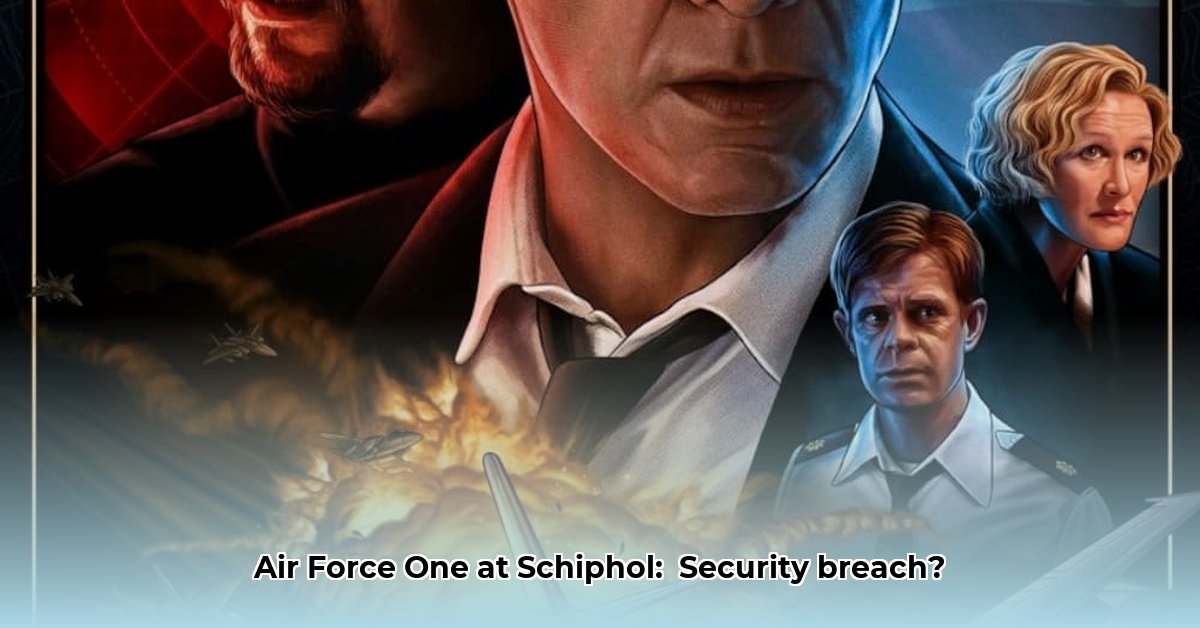
Waar Is Air Force One Nu? Schiphol's Security Showdown
The recent arrival of Air Force One at Amsterdam's Schiphol Airport triggered a significant security operation, impacting airport operations and raising questions about balancing national security with efficient air travel. The visit highlighted the complex logistical challenges involved in coordinating international security protocols and the ripple effects on passenger experience. This article examines the security measures implemented, their impact on Schiphol, and the lessons learned for future high-profile visits. For more on airport operations, check out this airport game.
The President's Landing: A Multi-Layered Security Operation
Air Force One's arrival initiated a multi-layered security operation, exceeding routine security protocols. While visible security measures such as increased personnel were evident, the operation encompassed sophisticated technological advancements and intelligence gathering unseen by the public. This comprehensive approach aimed to mitigate potential threats and ensure the President's safety, extending beyond the aircraft itself to encompass ground transportation and related infrastructure.
Beyond the Visible: Unveiling the Layers of Security
The visible security presence at Schiphol only represented a fraction of the overall security operation. Sophisticated technology, including advanced surveillance systems and secure communication networks, played a crucial role. Intelligence gathering efforts, possibly including preemptive threat assessments and real-time monitoring, were also likely deployed. This multi-faceted approach showcased the comprehensive security measures necessary for high-profile visits such as those by heads of state.
The Impact on Schiphol: Navigating Disruptions
The heightened security inevitably impacted Schiphol's operations. While official statements from Schiphol Airport regarding specific delays were limited, anecdotal reports suggest disruptions to scheduled flights and potential delays for passengers. These disruptions underscore the need for effective contingency planning to mitigate the impact of such events on the airport's daily schedule and passenger experience. This disruption is a significant consideration for both Schiphol and any other airport potentially hosting similar high-profile arrivals. How did Schiphol manage these issues, and what lessons can be learned?
A Collaborative Effort: US and Dutch Security Forces
The security operation necessitated close collaboration between US and Dutch security agencies. This collaboration involved coordinating personnel, equipment, and procedures across distinct national security frameworks. The successful integration of these systems demonstrates the capability of international cooperation in managing complex high-stakes security arrangements. Such close collaboration is essential and highlights not only effective security but also efficient international cooperation.
Schiphol's Future: Refining Protocol and Preparedness
This visit serves as a valuable case study in managing the security requirements of high-profile arrivals. Schiphol can utilize learnings from this operation to refine protocols, invest in technology, and improve inter-agency communication to minimize future disruptions. Continuous improvement in security protocols and capacity planning are vital components of future preparedness for similar high-profile visits. Looking ahead, what strategies can be implemented to improve handling of future events?
Mitigating Future Disruptions: A Proactive Approach
Key Takeaways:
- The Air Force One visit demonstrated the potential for significant disruptions to airport operations despite existing security protocols.
- Balancing robust security with airport efficiency remains a crucial challenge.
- Improved collaboration and communication among stakeholders are vital for mitigating future disruptions.
Striking a Balance: Security and Efficiency
This event highlights the inherent tension between maintaining stringent security protocols and ensuring the efficient operation of a busy international airport like Schiphol. The scale of the operation necessitated significant resource allocation, leading to potential displacement of other operational priorities. How can this dichotomy be addressed? This is an ongoing discussion related to airport management, national security, and international relations.
A Multi-pronged Approach for Future Visits
A multi-faceted approach is needed to mitigate the impact of future high-profile visits:
- Predictive Modelling: Implementing predictive modelling to anticipate passenger numbers and potential flight disruptions allows for proactive adjustments in staff allocation and resource deployment, ensuring smoother and more efficient operations.
- Technological Advancements: Investing in advanced security technologies that improve passenger flow and processing times can contribute significantly to minimizing delays and disruptions. This includes screening technologies and other passenger-facing systems.
- Strategic Partnerships: Strengthening collaboration and communication among Schiphol, relevant government agencies, airlines, and other stakeholders is essential to create a coordinated and proactive response to future events.
- Improved Communication Strategies: Establishing clear and timely communication channels with passengers, airlines, and other stakeholders is crucial for managing expectations, reducing frustration, and ensuring transparency throughout the process.
- Contingency Planning: Developing detailed contingency plans to address various scenarios will better prepare Schiphol for unexpected events during these high-profile visits.
This strategic approach prioritizes proactive measures and collaboration to improve preparedness and minimize operational disruptions in future similar events. The experience of Air Force One's visit provides a valuable learning curve for all involved.